- Home
- Our Story
- Safaris & Excursions
- Guides
- Gallery
- News
- Contact Us
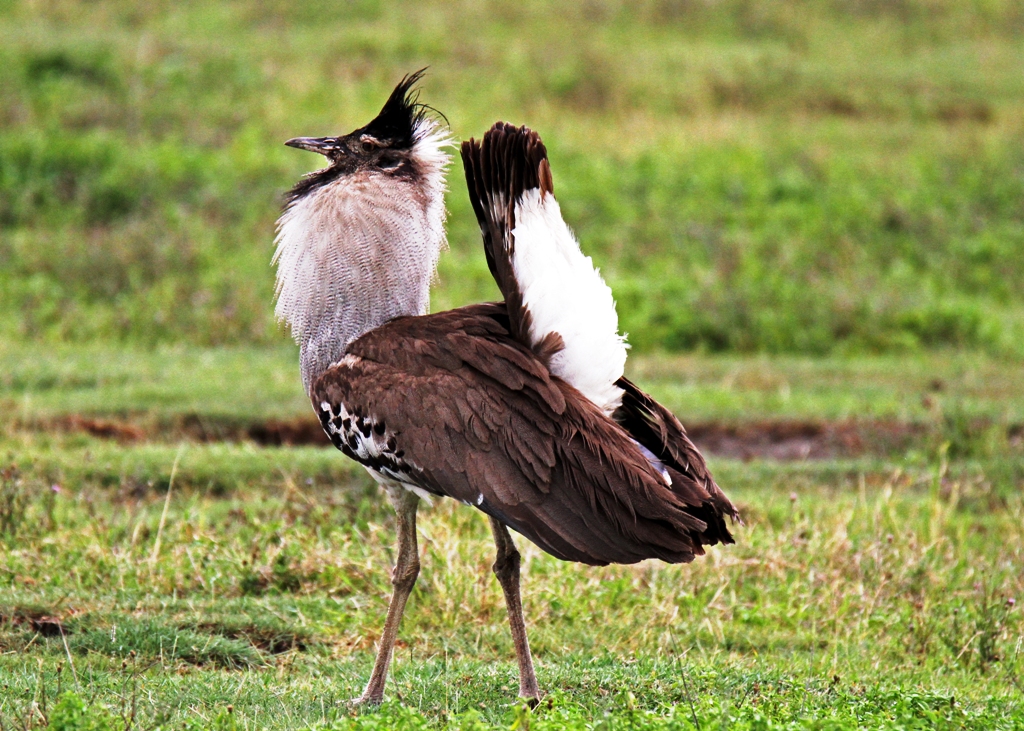
This exciting and marvelous Southern Tanzania birding tour shall take you to some of Africa’s most legendary birding and wildlife destinations as we follow a fascinating route filled with an excellent array of habitats and specialist bird species including many endemic birds and major African mammals. Tanzania is known to be a very productive destination for birdwatching and big game safaris.
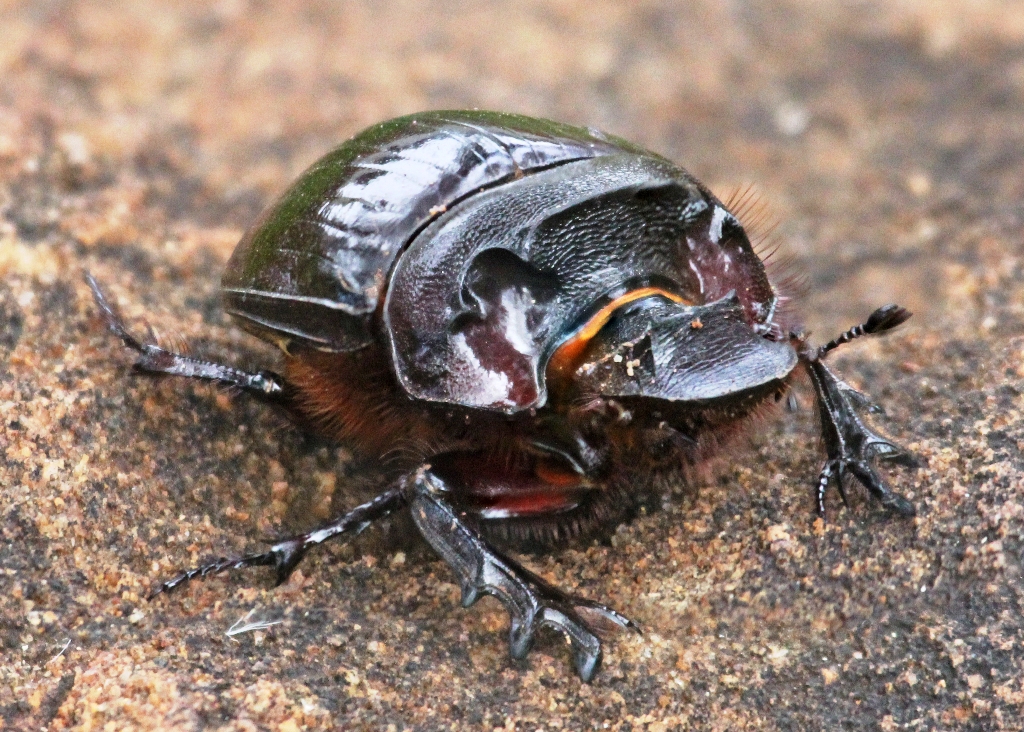
The country has over 40 endemic birds which makes it among Africa’s top birding must-visit countries. Tanzania’s geography is varied leading to various climates. Even though in the tropics, the higher areas are fairly cool. Tanzania is an enchanting destination for many birdwatchers given its many localized and rare endemic species
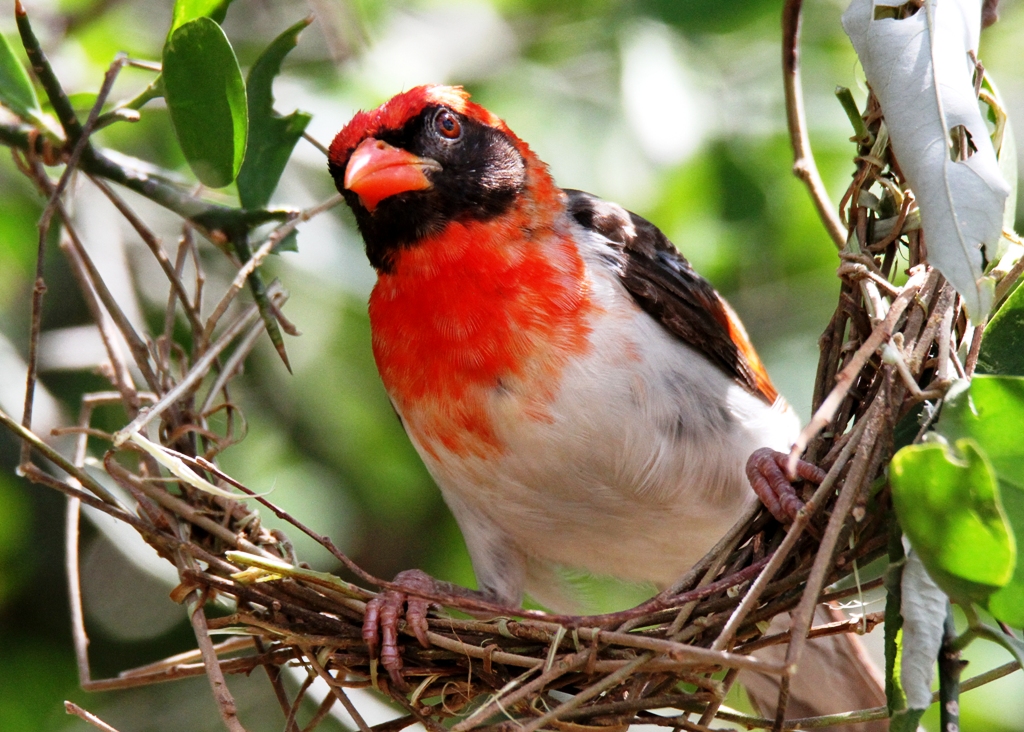
Tanzania birdwatching hotspots may be divided into three main geographical regions plus two smaller western regions, the narrow coastal region including the islands of Zanzibar and Pemba which host four endemic birds namely; Pemba Scops Owl, Pemba White-eye, Pemba Sunbird, and Pemba Green Pigeon, the Central Plateau, the Mountains, Lake Victoria, and the far northwest. Birding safaris in Tanzania are excellent throughout the year. In Engikaret Lark Plains 45 kilometers north of Arusha, there is an endemic lark – Beesley’s Lark. This is one of Africa’s most endangered birds. With less than 60 individuals, in a single isolated population
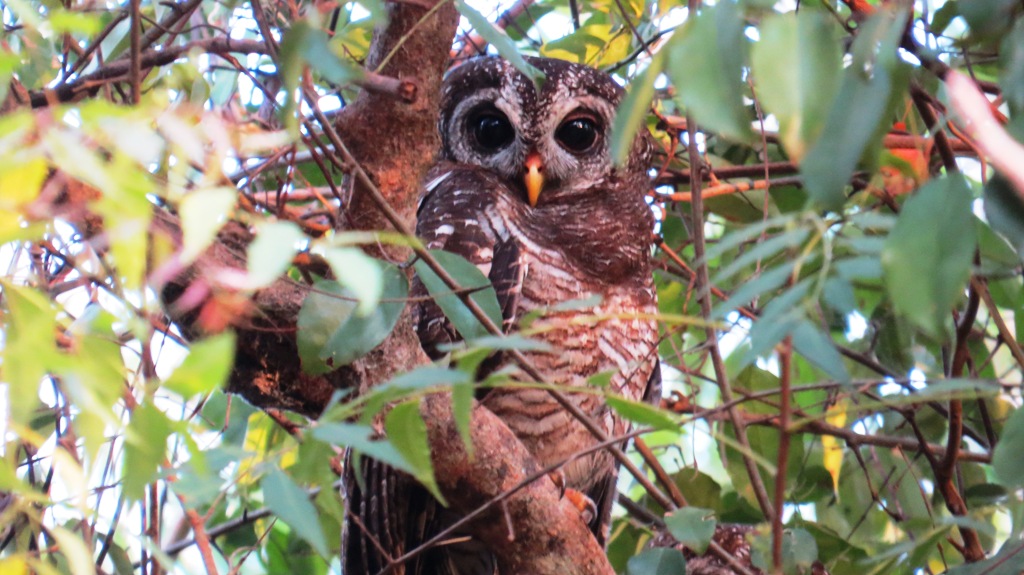
Birdwatching safaris in Tanzania in the rainy season can be very delightful. The rains tend to come in afternoon thunderstorms and rain-out days are unusual. Some birding and wildlife reserves become impenetrable due to muddy conditions, but most birdwatching hotspots remain accessible. Wildlife safaris are thrilling and birding and photography are superb throughout the year.
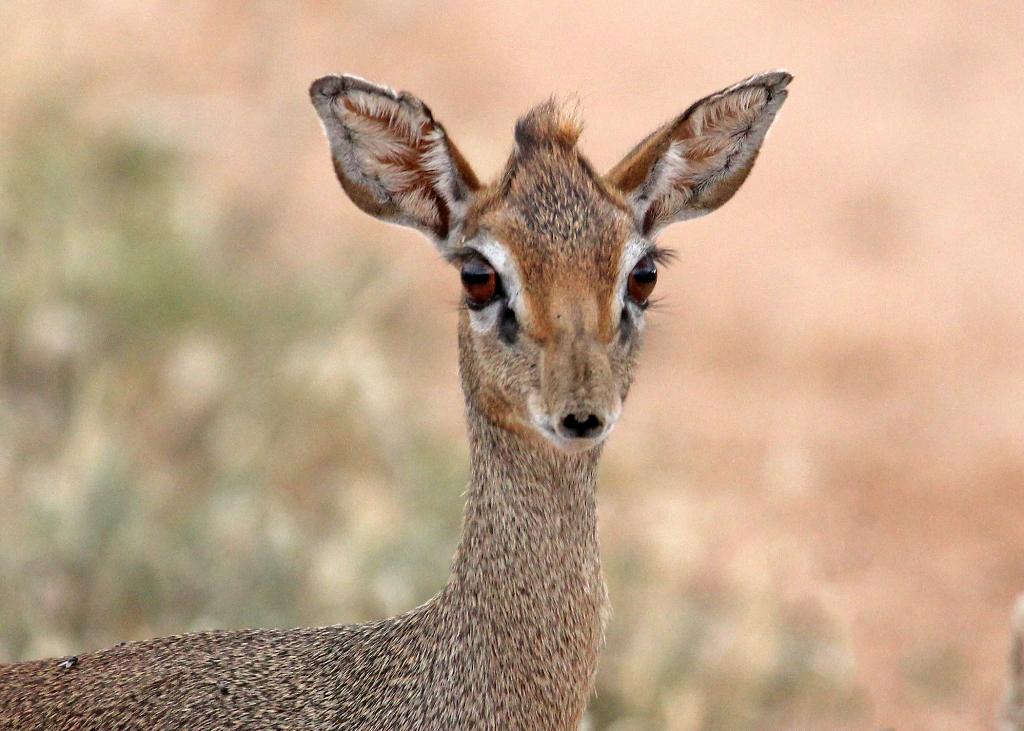
The Central Plateau of Tanzania is a major attraction of the country, as that is the region of huge plains and major national parks and reserves such as the enormous Serengeti National Park, Ngorongoro Crater, Lake Manyara, and Tarangire National Park renowned for their high density of Savannah Elephants and huge Baobab trees.
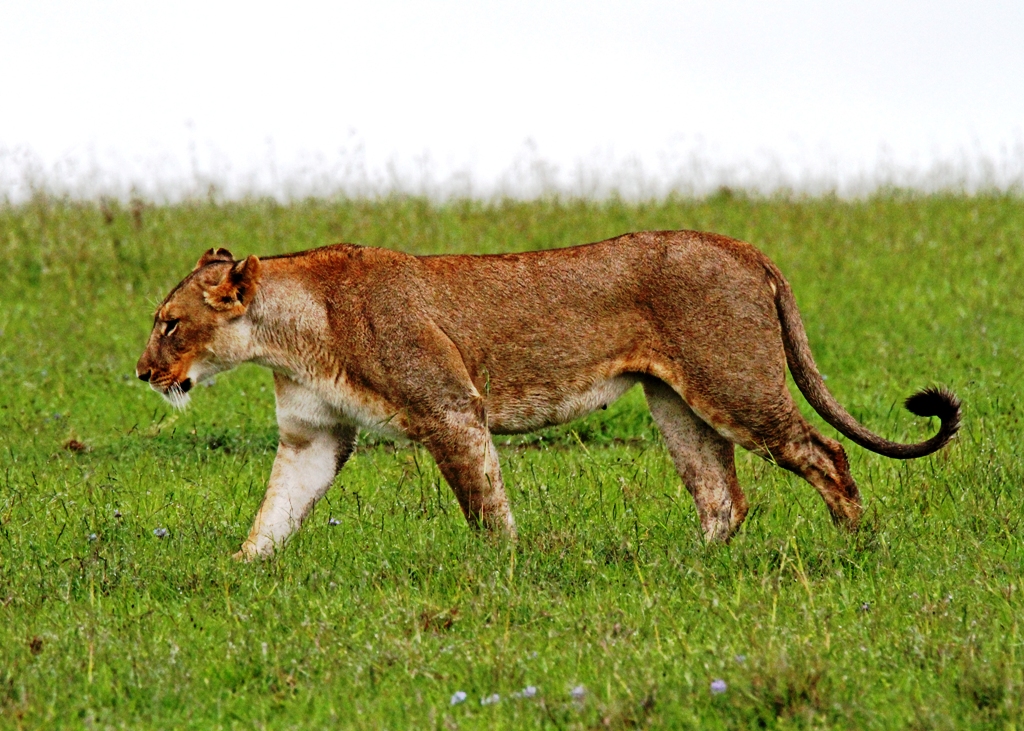
Lake Natron, the most important breeding site for Lesser Flamingos, the magnificent Ngorongoro Conservation Area, one of the wonders of Africa, and a must-visit destination, and Mount Kilimanjaro Africa’s highest mountain. The Central Plateau is where most visitors go on game safaris, but it also offers numerous birding opportunities. In fact, this is the region where most Tanzania birding tours spend the majority of their time.
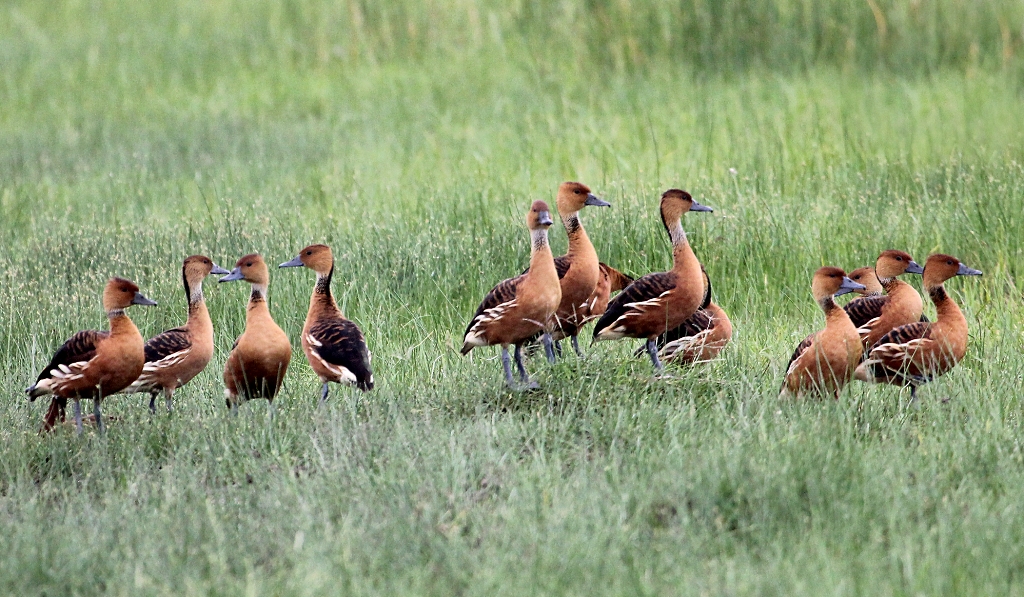
Tanzania Birding Tours offers a wide range of the best birding destinations to visit, The country is huge with some unexplored wilderness which has very interesting sightings. The rich endemic montane forests of the Eastern Arc Mountains, comprise 12 mountain blocks stretching 900 kilometers from Kenya to Tanzania.
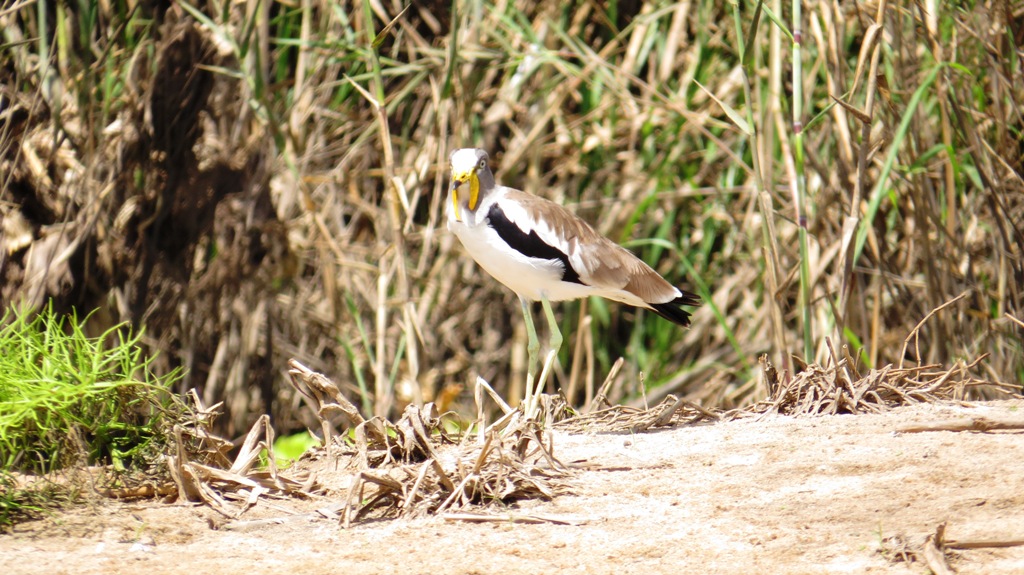
The forests are the Usambara, Pare, Udzungwa, Uluguru, Ukaguru Mountains, Nguru Mountains, Rubeho Mountains, and Mafwemiro Forest which holds some of the most exciting birds on the continent. The Eastern Arc Mountains contain at least 800 endemic plant species, 10 endemic mammals, 19 endemic birds, 31 endemic reptiles, and 40 endemic amphibians. The Miombo woodland which has some of the range-restricted species is often in hilly areas in southern Tanzania and beyond to Mozambique, Malawi, and Zambia.
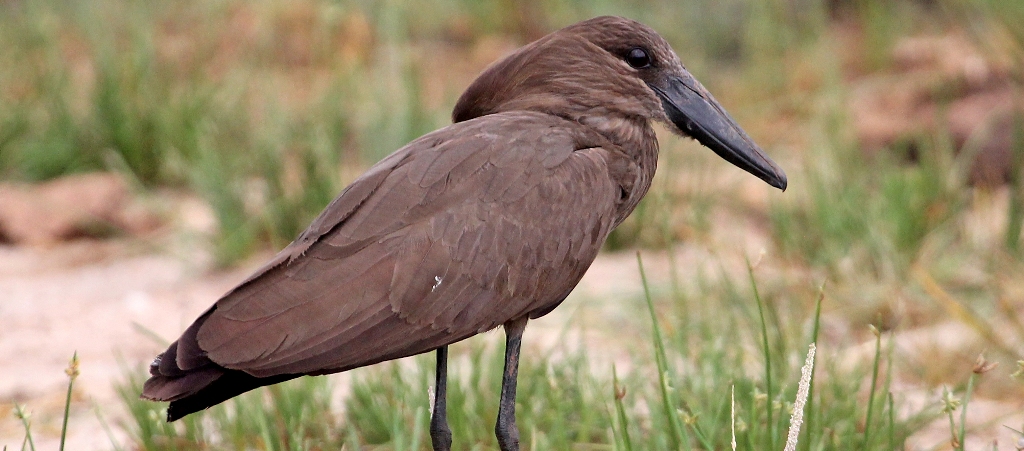
Tanzania Birding Tour will explore the top southern birding sites covering:
Dar-es-Salaam, Saadani National Park, Mikumi National Park, Udzungwa National Park, Kilombero Swamp, Selous Game Reserve, Ruaha National Park. Apart from birdwatching, we shall have a large concentration of wildlife in most of all the destinations mentioned, photography opportunities will be splendid
Kindly note the Southern Tanzania Birding tour can be combined with the Northern Tanzania Safari
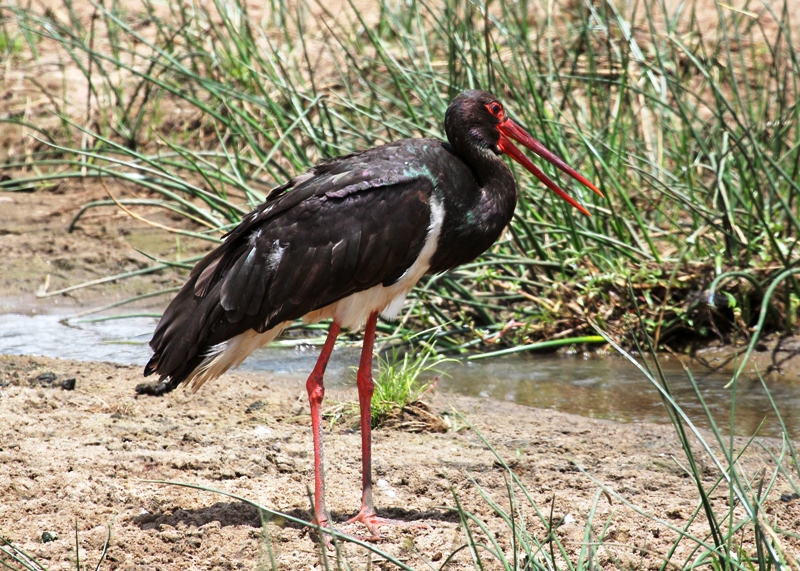
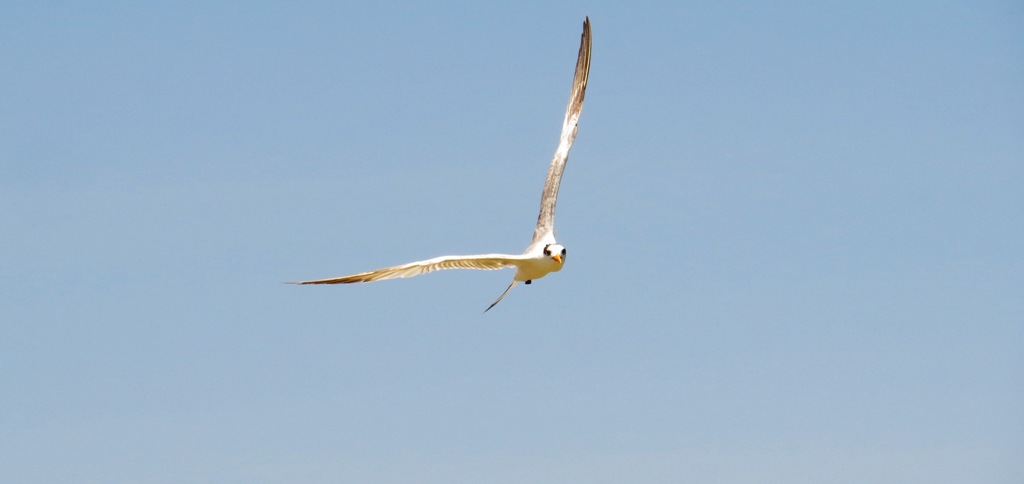
Our Southern Tanzania birding and wildlife tour starts in Dar-es-Salaam in the Mbezi area, around 20 kilometers north of the city center. The accommodation is close to the beach, which is relatively tranquil and a good spot for birds, if time allows, do an evening birdwatching tour along the beach before retiring back to the hotel for dinner and an overnight stay. Bird species; Red-eyed Dove, Tawny-flanked Prinia, Spotted Morning Thrush, Yellow Bishop, Gull-billed Tern, Little Egret, Brown-breasted Barbet
We shall continue with the Southern Tanzania Birding Tour in Dar-es-Salaam, by doing a pelagic boat ride on the Mbezi beach for the morning birding tour which may take two to four hours depending on the day’s weather and the abundance of wading birds along the coastal lagoons.
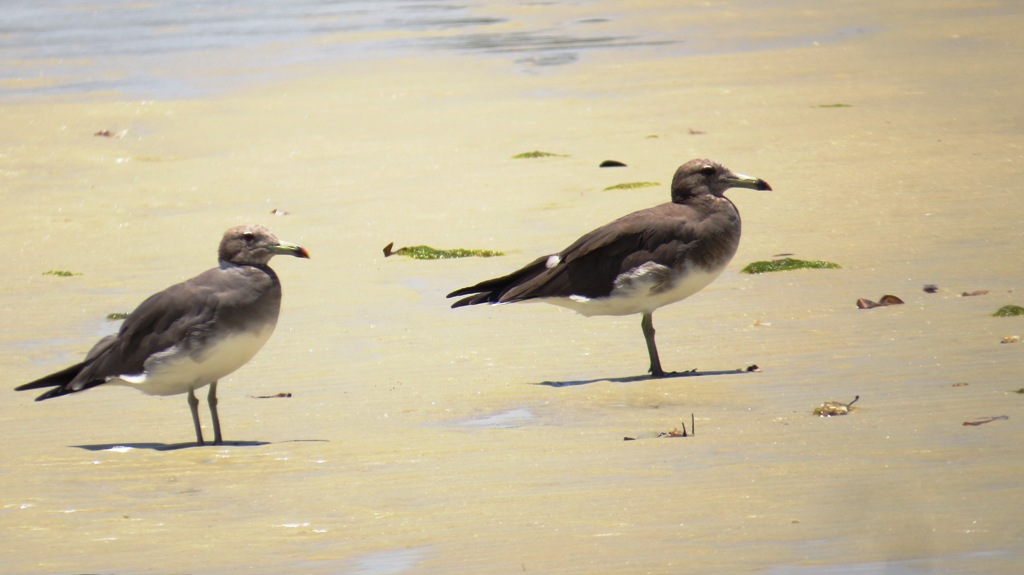
The place is hot, so birding is productive in the early morning hours and late afternoon. Notable bird species; Black-bellied Plover, Common Ringed Plover, Whimbrel, Sanderling, Water Thick-knee, Sooty Gull, Lesser and Greater Sanplovers, Lesser Crested Tern, Gull-billed Tern, Sandwich Tern, Caspian Tern, Common Tern, White-cheeked Tern, Roseate Tern, Saunder’s Tern, Bridled Tern, Sooty Tern, Lesser Black-backed Gull, Heuglin’s Gull, Common Black-headed Gull, Masked Booby, Cape Gannet, Greater Frigatebird.
Morning departs for Saadani National Park, with a stopover at Pande Game Reserve, on the road to Bagamoyo town, There are several swamps along the route which are also good birding areas. Bagamoyo-whose name means ‘bury my heart in Swahili is one of the most fascinating towns in East Africa, with a host of historical associations. Bagamoyo is Tanzania’s seventh world heritage site and the oldest town in the country.
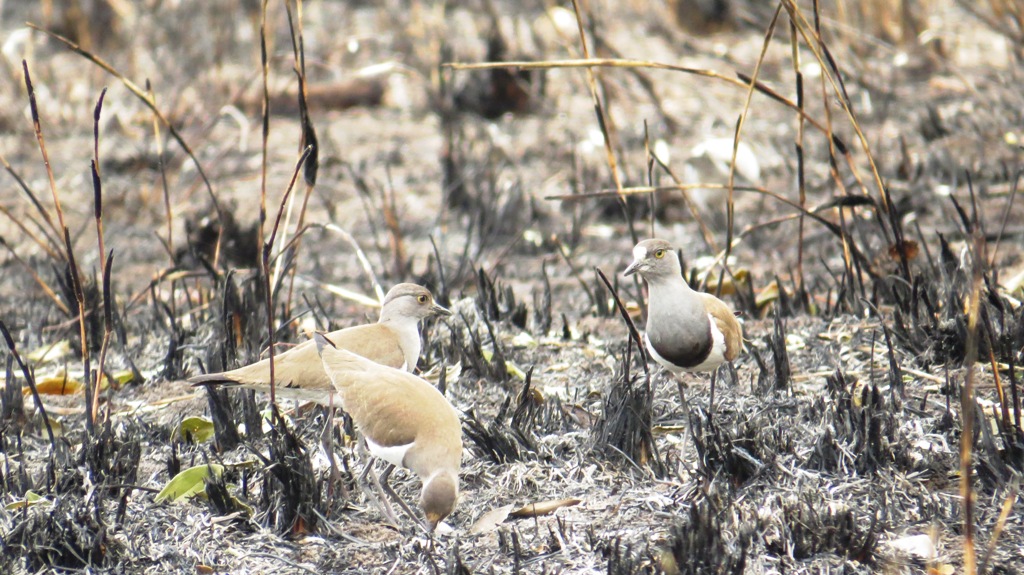
Birds in Saadani National Park: Yellow-streaked Greenbul, Black-headed Apalis, Little Greenbul, Sokoke Pipit, Bush Pipit, Whimbrel, Eastern Nicator, Eastern Black-headed Batis, African Golden Oriole, Bateleur, Black-bellied Starling, Zanzibar Red Bishop, African Golden Weaver, Collared Palm Thrush, Lizard Buzzard, Fasciated Snake- Eagle, Chestnut-fronted Helmetshrike, Golden Pipit, Mangrove Kingfisher, Ayre’s Hawk-eagle, Tiny Greenbul, Saunder’s Tern, Fischer’s Turaco, Great Sandplover, Bar-tailed Godwit, Lesser Sandplover, Northern Brownbul,
Morning breakfast and then proceed with the Southern Tanzania birding tour in Saadani Park. Birding in Saadani is excellent throughout the year. The park borders the Indian Ocean making it a unique blend of birds and wildlife
The Saadani National Park is home to a variable mix of both marine and mainland flora and fauna. The vegetation in the park is quite unique and includes mangrove forests around the winding Wami River and ocean, clumps of palm trees, coral reefs in the Indian Ocean, short and tall-grass savannah, and the harsh black cotton plains.
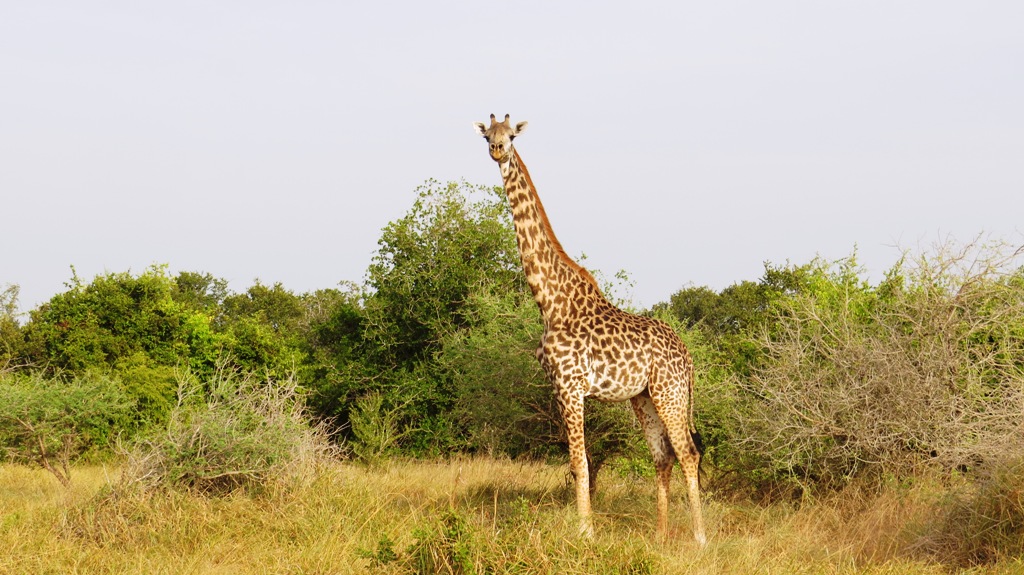
The marine environment includes the breeding areas and habitat for over 40 fish species. In terms of wildlife, Saadani National Park has a thriving population of Sable Antelope, Waterbucks, Wildebeests, Hartebeests, Reedbucks, Cape Buffaloes, and Maasai Giraffes. Warthogs, baboons, and colobus monkeys are often spotted, while elephants, lions, and leopards are quite shy. Saadani National Park is a truly spectacular place for ornithologists. Birding in Saadani National Park is confirmed in the car, you can also do a boat ride in the Wami River, and visit the salt pans for waders such as the Red-necked Phalarope, Whimbrel, Water Thick-knee, Terek Sandpiper, Saunder’s Tern, Common Ringed Plover.
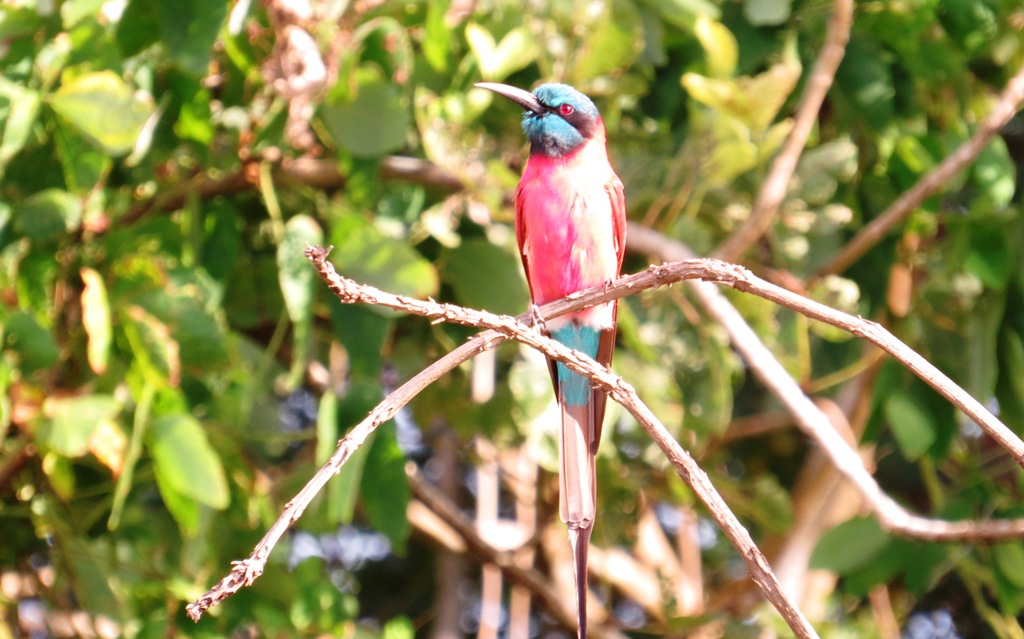
This morning we shall have breakfast and later leave Saadani National Park with a stopover along the way in wetlands and swamps in the Wami and Ruvu rivers which might be productive for the highly localized Ruvu Weaver, Keep an eye out for the gorgeous Zanzibar Red Bishop displaying on top of reeds, White-throated Bee-eaters perching on bushes along the road, White-browed Coucal will be heard calling underneath the thickets. Dickinson’s Kestrel may be seen roosting on top of palm trees. In Mikumi National Park walking safaris are permitted, which have to be accompanied by a trained ranger due to the high number of predators such as leopards and lions plus many mega-herbivores
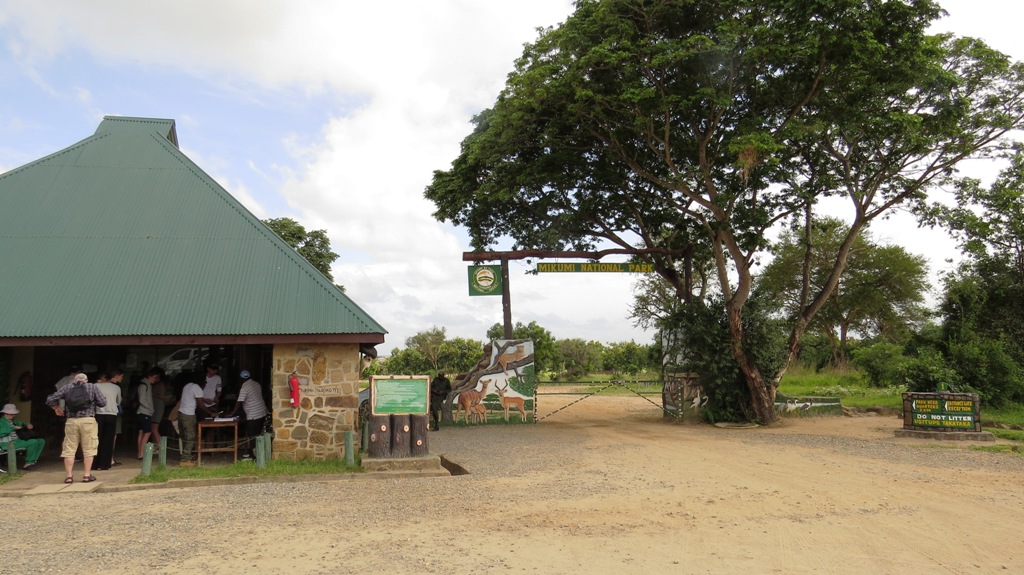
Another unforgettable birding day! after an early morning breakfast, we shall drive to Mikumi National Park for a full-day birdwatching tour. The scenery in this magnificent park is astonishing, the area is dominated by Miombo woodlands, hills, and plains. We shall spend the better part of the day searching for Mikumi’s specialties such as the Pale-billed Hornbill, Shelley’s Sunbird, Miombo Rock Thrush plus many more compelling bird species
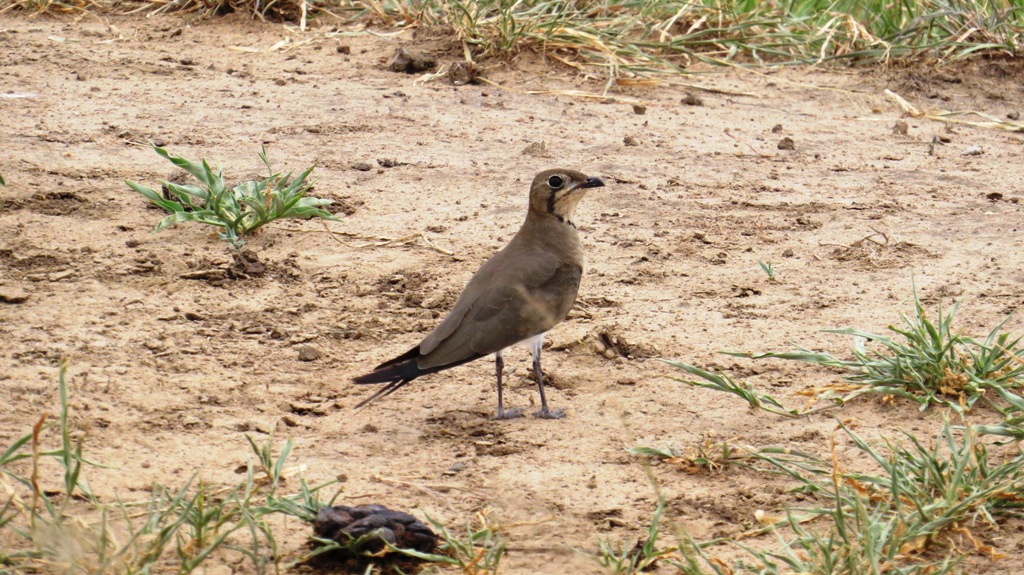
Birds of Mikumi National Park include; the Red-necked Francolin, Southern Ground Hornbill, Mosque Swallow, Yellow-billed Oxpecker, Collared Palm Thrush, Southern Cordon bleu, Yellow-fronted Canary, Racket-tailed Roller, Pale-billed Hornbill, Sooty Falcon, Croaking Cisticola, Brown-headed Parrot, Dickinson’s Kestrel, Lesser Blue-eared Starling, Jameson’s Firefinch, Senegal Lapwing, Small Buttonquail, Fasciated Snake-Eagle, Greencap Eremomela, Pale Batis, Southern Grey-headed Sparrow, Orange-winged Pytlia, Crested Barbet, Green-backed Woodpecker, Stierling’s Wren Warbler, Rufous-bellied Tit, Piping Cisticola, Arnot’s Chat, Shelly’s Sunbird, Reichenow’s Woodpecker, Livingstone Flycatcher, Kurrichane Thrush, Southern Fiscal, Broad-tailed Paradise Whydah, Black-throated Canary, Fullebron’s Longclaw, Southern Yellow White-eye, Swallow-tailed Bee-eater, Livingstone Turaco. Birding in Mikumi National Park requires a 4×4 Landcruiser jeep.
Leave in the morning for Ruaha National Park. This will be a long drive and the road may be murram at some point, but the scenery as the drive is exceptionally beautiful. Ruaha offers off-beaten track game-viewing experiences, approximately 10 percent of the world’s lion population is found in the park. The banks of the Ruaha River which meander through the park are a permanent hunting ground for lions, wild dogs, leopards, and jackals, this remote wilderness area has an undisputed and great safari experience.
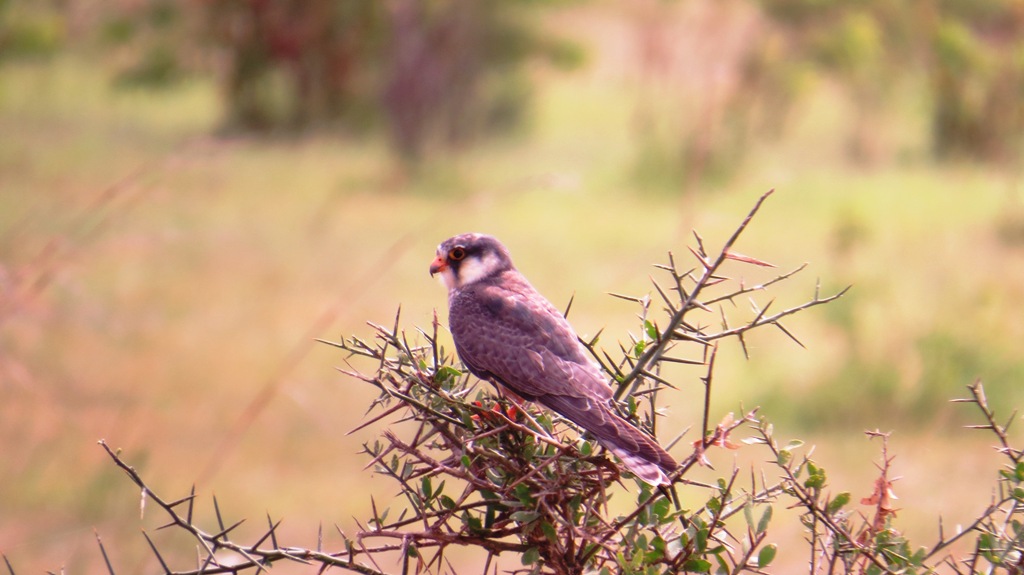
Birds of Ruaha National Park; Shelly’s Francolin, Tanzania Red-billed Hornbill, Miombo Wren Warbler, Ashy Starling, White-rumped Shrike, Golden-backed Weaver, Black-faced Waxbill, Swahili Sparrow, White-headed Lapwing, Golden-tailed Woodpecker, Black-necked Weaver, Senegal Coucal, Ruaha Chat, Purple-crested Turaco, Bat Hawk, Angola Swallow, Grey Tit Flycatcher, Bat-like Spinetail, Western Violet-backed Sunbird, Coppery-tailed Coucal, Square-tailed Nightjar, African Broadbill, Familiar Chat, Dwarf Bittern, Bronze-winged Courser, Tabora Cisticola, Wailing Cisticola, Marsh Tchagra, Pel’s Fishing Owl, Bennett’s Woodpecker, Blue-spotted Woodpecker, Western Miombo Sunbird, Southern Citril, Reichard’s Seedeater, African Reed Warbler, Tanganyika Masked Weaver, White-backed Night Heron, Brown-headed Apalis, African Spotted Creeper
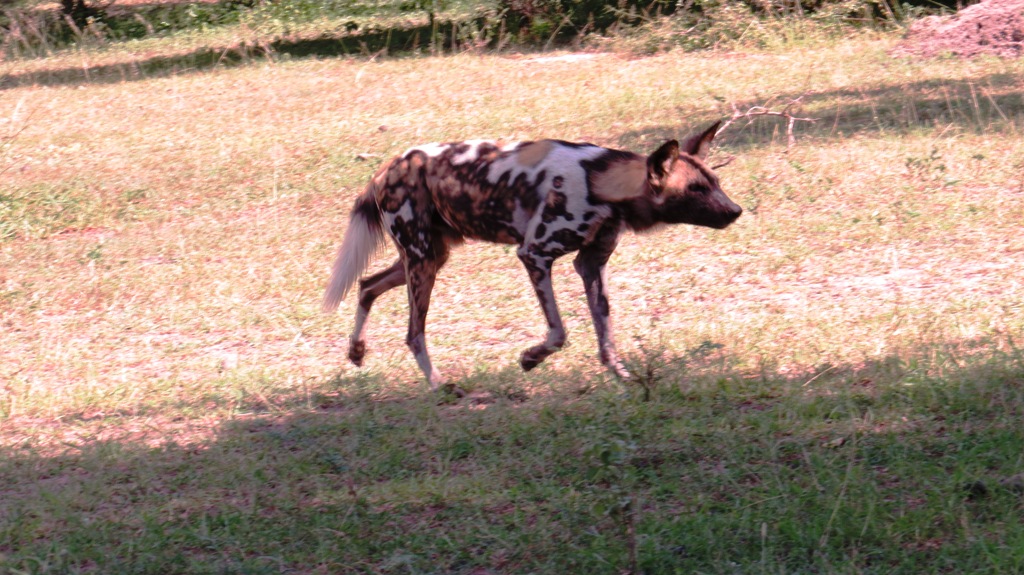
Birding in Ruaha National Park is exceedingly captivating and more rewarding
Ruaha National Park was established in 1910 as a Game Reserve, later it was gazetted as a National Park in 1964. The park, covering an area of 20,226 square kilometers, is the largest in Tanzania and the second-largest in Africa. Ruaha National Park is derived from the Great Ruaha River, which flows along its Southeastern margin and is the focus of game-viewing. Ruaha River originates from the Northern slopes of the Poroto and Kipengere Mountains ranges. Ruaha National Park is well-known for its exceptional wildlife-sighting opportunities; this makes it a spectacular destination to visit. The main vegetation in Ruaha National Park is semi-arid bush, through which the Great Ruaha River flows. The arid bush is transitional to acacia savannah and Miombo woodland, many birds in the Miombo woodlands are interesting and amazing such as the Miombo Grey Tit, Racket-tailed Roller, Miombo Scrub Robin, Pearl-breasted Swallow and Streaky-breasted Flufftail
Ruaha National Park is one of the Tanzania bird paradises with more than 571 bird species and some of them are known to be migrants from within and outside Africa.
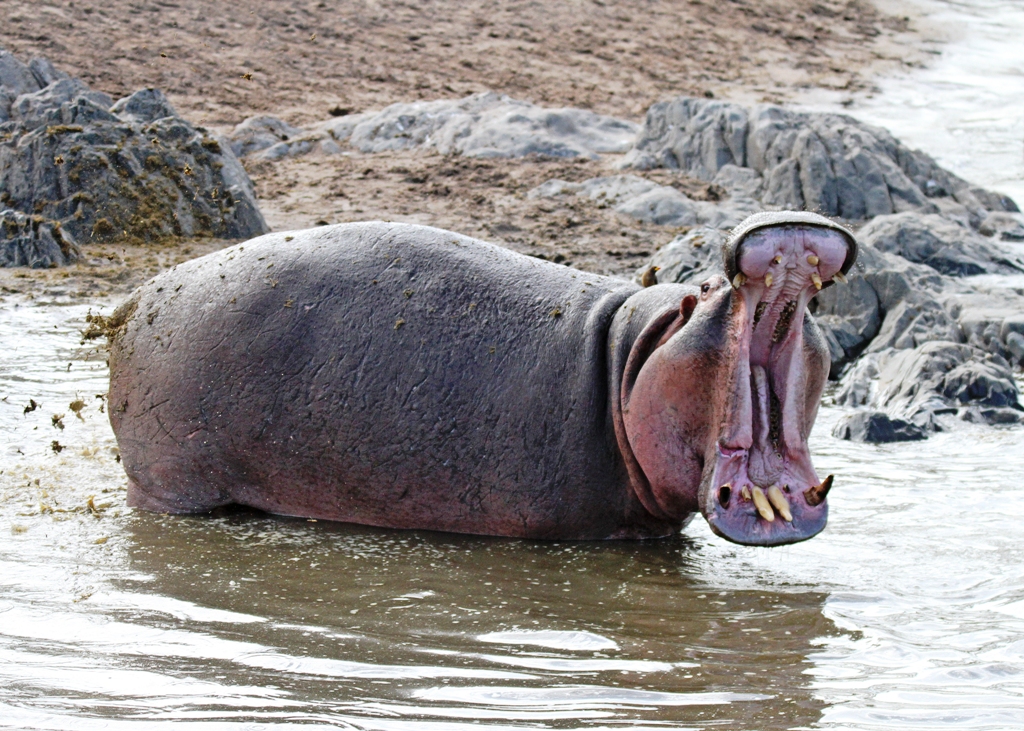
Ruaha is believed to have a higher concentration of elephants than any National Park in East Africa. African Elephants are seen in high concentration during the dry season when they gather around the dry riverbed to excavate for water with their trunks and front feet. Ruaha is also a place where, magnificent mammals like Greater Kudu, Sable, and Roan antelopes can easily be spotted in Miombo woodland. The park is also a habitat for endangered African wild dogs. Other animals in the Ruaha Park include lions, leopards, cheetahs, giraffes, zebras, elands, impalas, bat-eared foxes, and Jackals
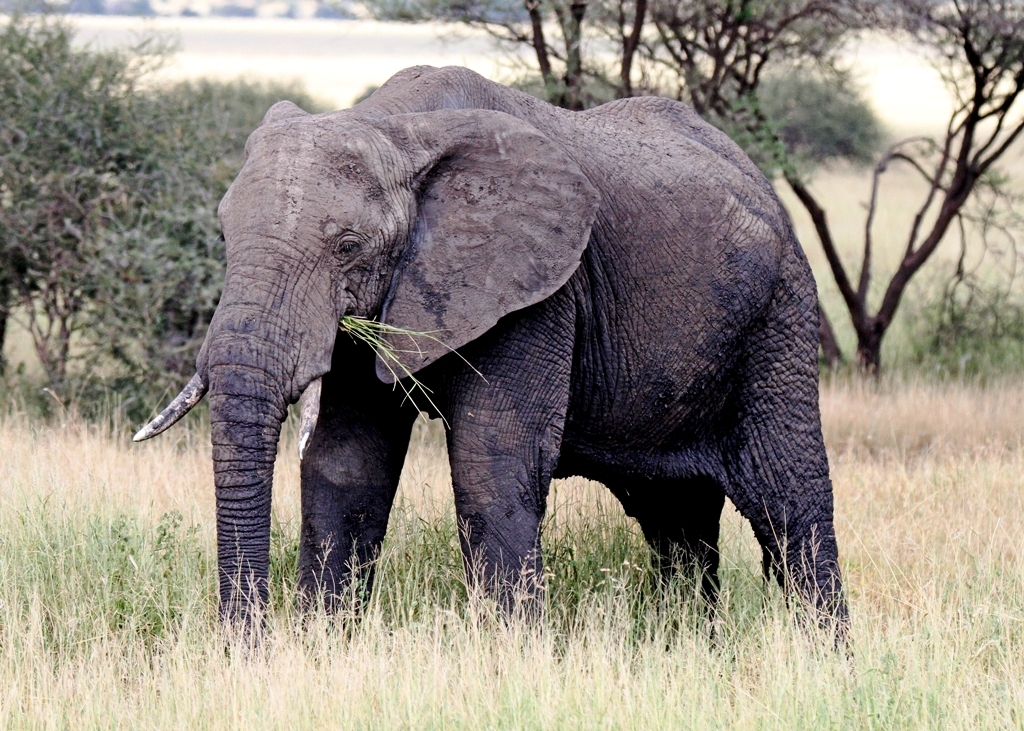
After the excitement of Ruaha National Park, depart to Udzungwa Mountain arriving in the late evening (long drive) at Hondo Hondo Forest Camp-nestled into the base of the Udzungwa Mountains, an ideal location for exploring the mountains. The campgrounds are flourishing and rich with birds, and we shall spend some time birding around. You get excellent views of the forest canopy where you may be able to see the endemic Udzungwa Red Colobus and Sanje Crested Mangabey. The great Udzungwa Mountains are the southernmost, largest, and most diverse of 13 isolated ranges that form the chain of Africa’s Eastern Arc. The larger extent of Udzungwa mountain slopes are still forested, with Miombo woodlands grading into montane forests protected in Udzungwa National Park

Birds of Udzungwa Forest: Uluguru Violet-backed Sunbird, Magpie Mannikin, African Wood Owl, Half-collared Kingfisher, Livingstone Turaco, African Barred Owlet, White-eared Barbet, Green-backed Woodpecker, Black-bellied Starling, Black-and-white Shrike-flycatcher, Bar-throated Apalis, Forest Weaver, Green Malkoha, Pallid Honeyguide, Kretschmer’s Longbill, Red-capped Robin-Chat, Rufous-winged Sunbird, Wailing Cisticola, Southern Red Bishop, Uhehe Fiscal, Olive Woodpecker, Nyasa Seedcracker, Churring Cisticola, Yellow-throated Woodland Warbler, Olive-flanked Robin-Chat, Mottled Spinetail, Bohm’s Spinetail,
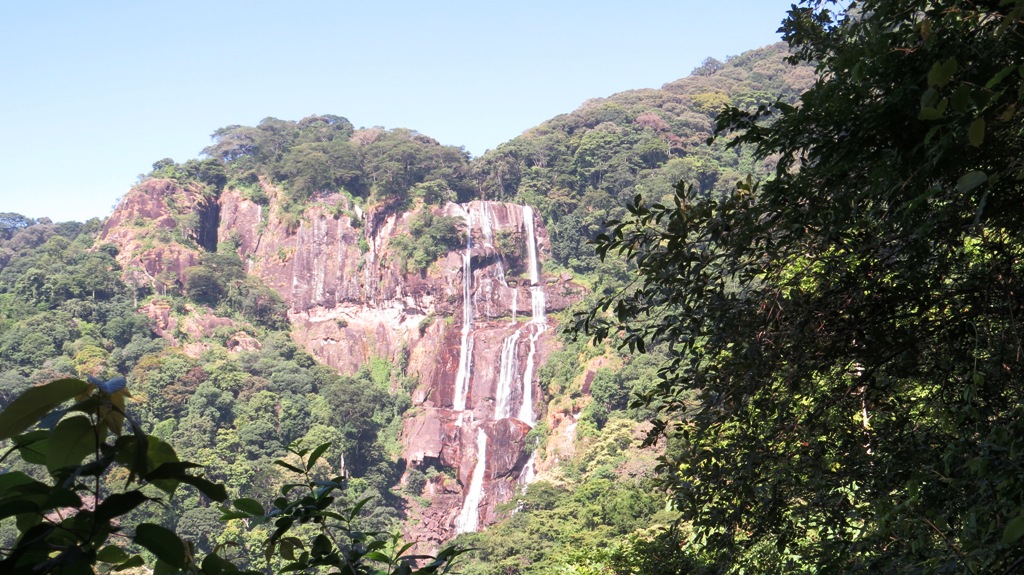
Morning breakfast then continues with our Southern Tanzania birdwatching tour, we shall start by doing a hike of 6 kilometers to Sanje Waterfalls looking for the area endemics, such as the Rufous-winged Sunbird. The Udzungwa Mountain Range is the second most biodiversity on the continent, with a remarkably high level of endemism, including over 25% of its plant species. Although the park wasn’t established until 1992, there are still two thousand square kilometers of continuous closed-canopy forest intact, stretching from an elevation of two hundred to over two thousand meters. It’s truly the jewel of the Eastern Arc Mountains with many biological discoveries no doubt yet to be made. With over four hundred recorded bird species, including several that were discovered only recently, such as the unique Udzungwa Partridge and Rufous-winged Sunbird, the park bears must-see status for birders. Dappled Mountain Robins, Iringa red Colobus, and Kipunji Monkeys may also be seen
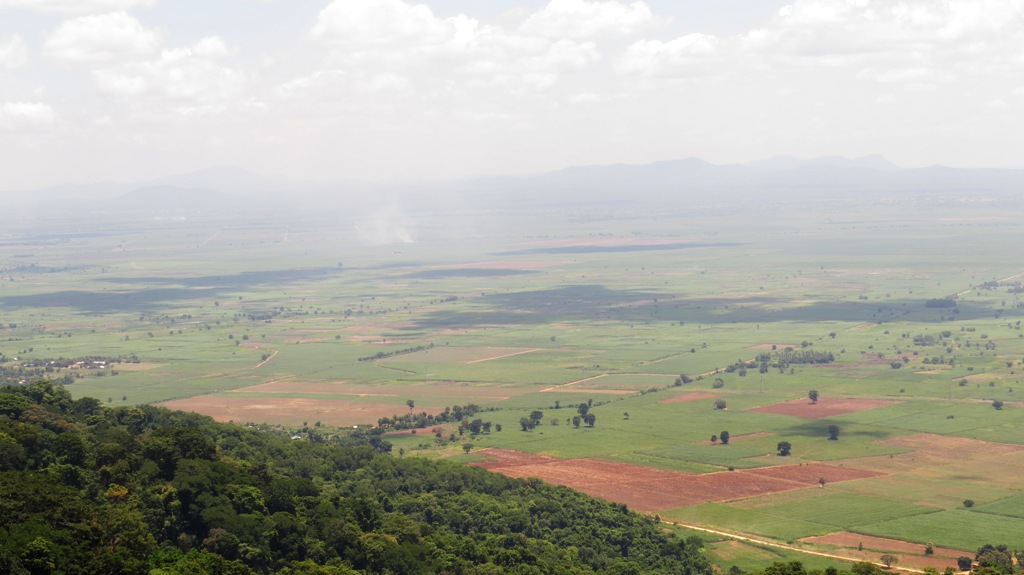
Drive to Kilombero Flood plains further southeast in Ifakara town. The Kilombero Valley Floodplain is a Ramsar site in Tanzania, covering an area of 7967 kilometers square. The Kilombero floodplain was once connected with the vast wetland habitats of the ancient Zambian Luangwa drainage system.
Species expected are the Tanzania endemics that have been discovered recently; Kilombero Weaver, Kilombero Cisticola, and White-tailed Cisticola.
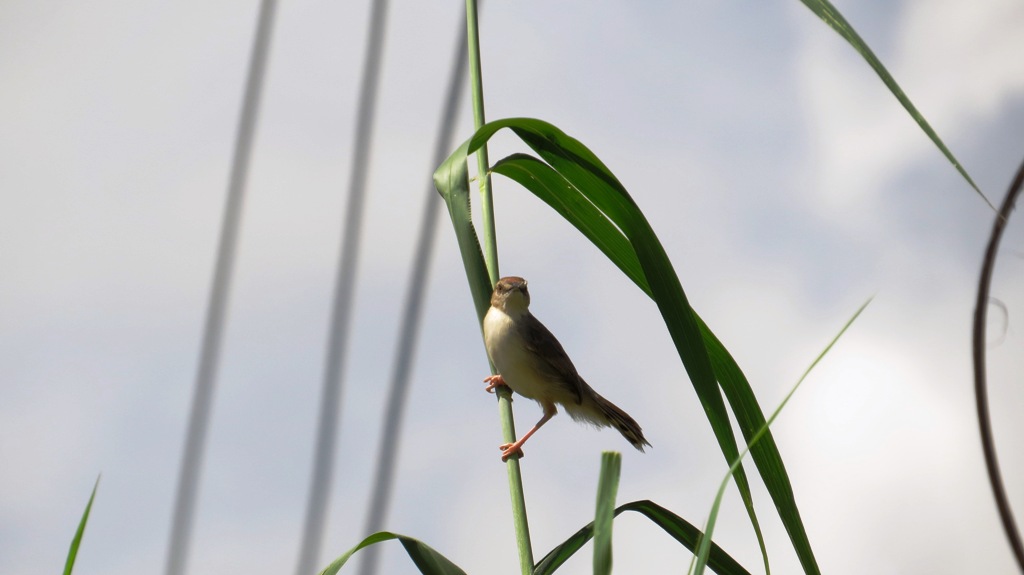
Other birds species of interest are the Coppery-tailed Coucal, African Pygmy Kingfisher, Taveta Golden Weaver, African Firefinch, Red-necked Falcon, Great Reed Warbler, Black-winged Bishop, Bertram’s Weaver, Black Coucal, Fullebron’s Boubou, Lesser Seedcracker, Red-winged Prinia, Black-tailed Waxbill, Southern Brown-throated Weaver, Magpie Mannikin, Denham’s Bustard, Fullebron’s Longclaw, Allen’s Gallinule, Swamp Nightjar, and the stunning Zebra waxbill, This will be done in a dug-out canoe in Kilombero River
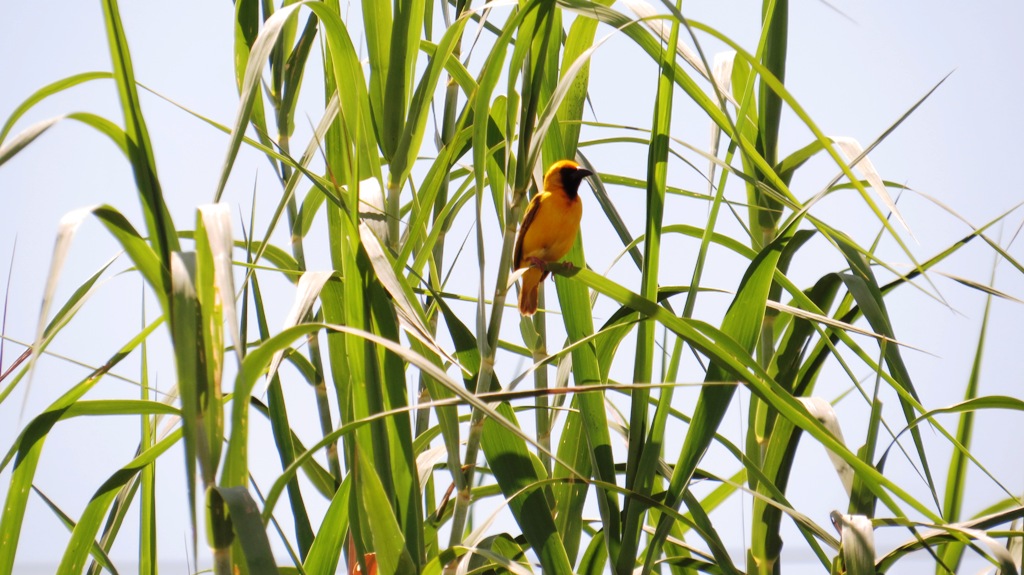
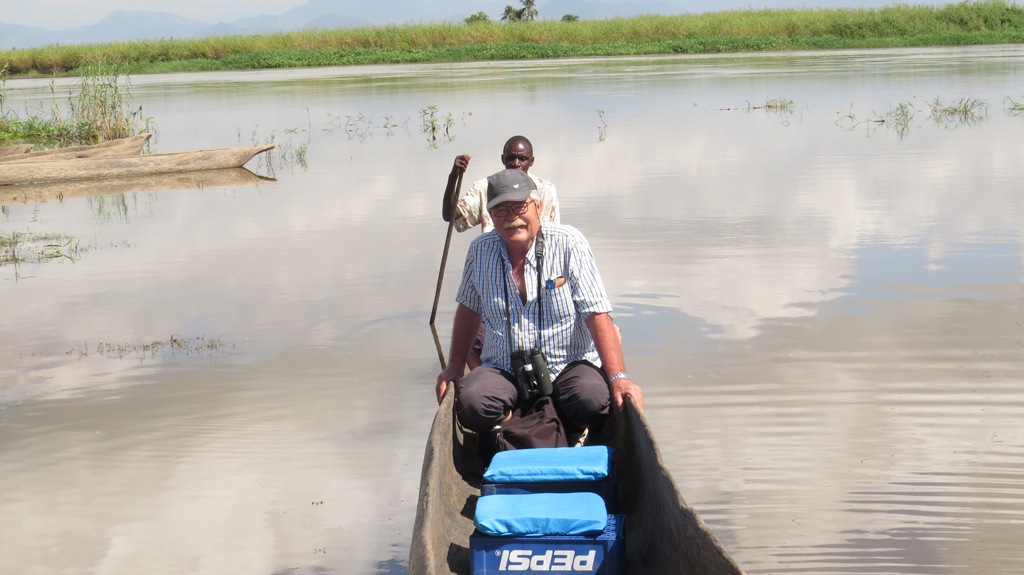
Early morning breakfast, thereafter drive on to Nyerere National Park via Morogoro to Kisaki a small town west of the famous Selous Game Reserve(recently named Nyerere National Park) this will be a long drive which will take us through the shoulders of the Uluguru Mountains where we may encounter some interesting bird species such as; Trilling Cisticola, Uluguru Mountain Greenbul, Yellow-throated Greenbul, Loveridge’s Sunbird, Mrs. Moreau’s Warbler, Uluguru Violet-backed Sunbird, White-winged Apalis, Chapin’s Apalis,
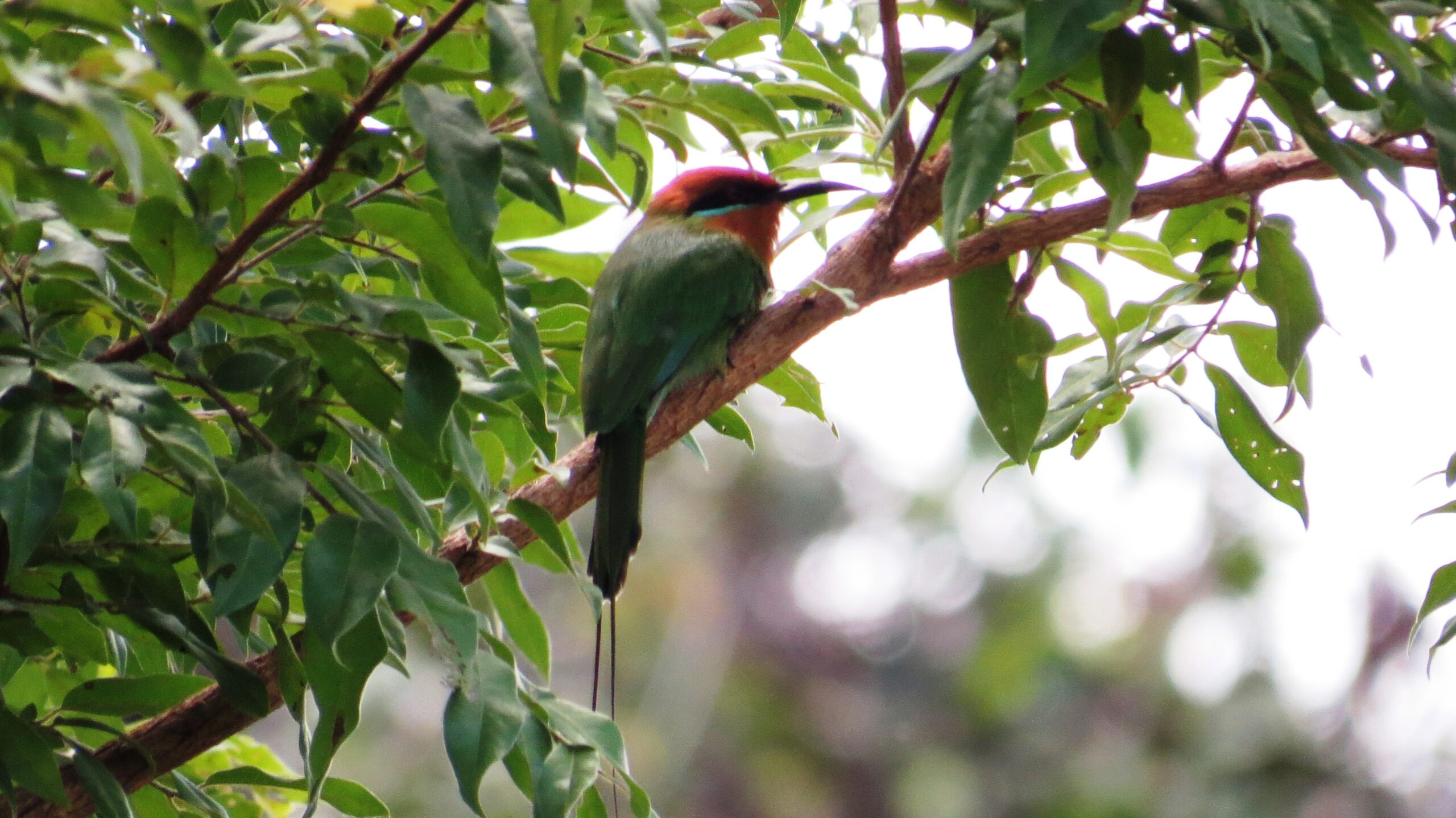
Nyerere National Park is a wild and unspoiled jungle in Southern Tanzania that boasts an alluring mix of abundant wildlife and diverse landscapes. On this day we shall drive through the Nyerere National Park to the eastern side of the Mtemere Gate, with stops along the way for birding and game viewing. Nyerere National Park is quite hot, and expansive, and has a lot of tsetse flies which have nasty bites. Birdwatching will mainly be done while driving, on the main road with a bit of off-driving into the bush to search for the area’s specials. Nyerere National Park is home to over 400 different bird species.
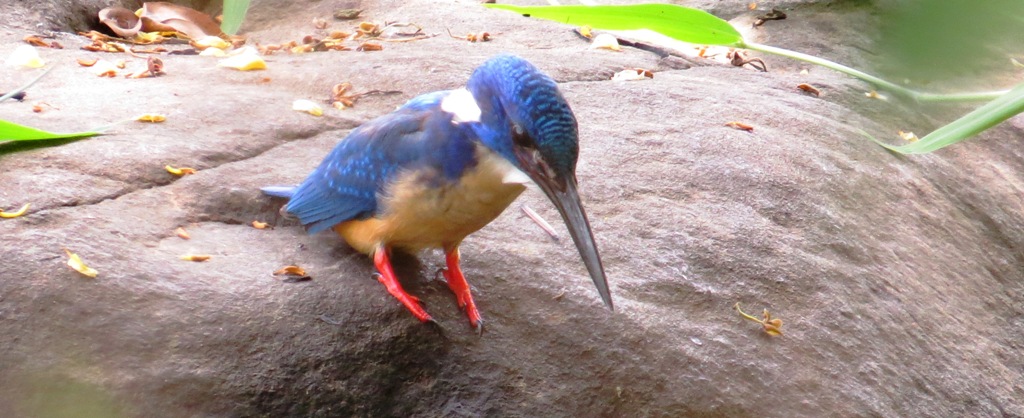
Birds to look for in Nyerere National Park; Bohm’s Bee-eater, Pearl-spotted Owlet, White-headed Lapwing, African Cuckoo-Hawk, Crested, Black-collared, and Brown-breasted Barbets, Golden-tailed Woodpecker, Miombo Blue-eared Starling, African Firefinch, Grey Go-away-bird, Green Malkoha, Brown-necked Parrot, Bearded Scrub Robin, Pale-billed Hornbill, Swallow-tailed Bee-eater, Terrestrial Brownbul, Rufous-tailed Rock Thrush, Pennant-winged Nightjar
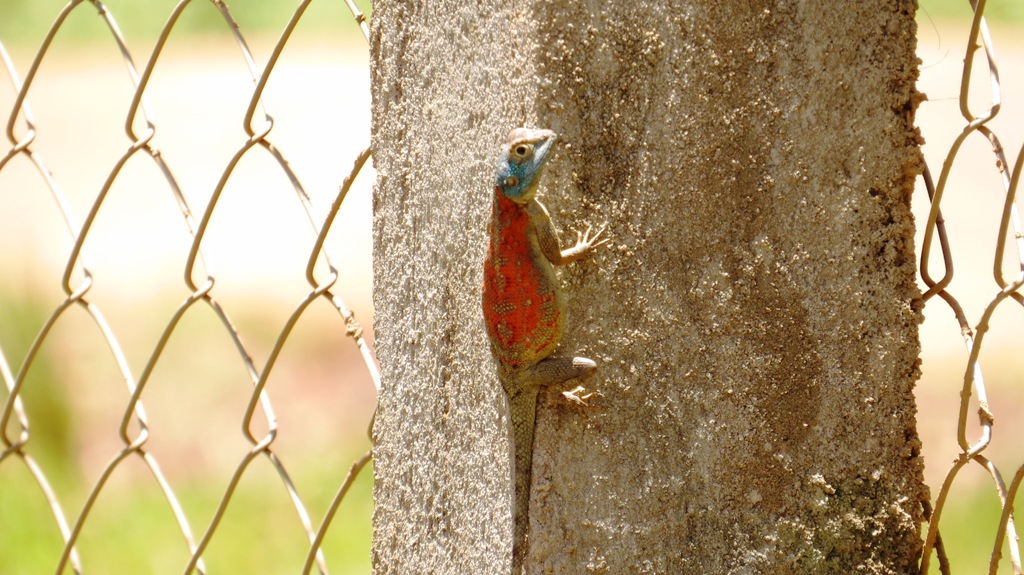
The Nyerere National Park (Selous Game Reserve) is the largest protected game reserve on the African continent covering an area of 54,600 square kilometers consisting of immense wilderness with forests, grassy plains, mountains, and open woodlands. The Park is crossed by River Rufiji (which is the largest river in Tanzania) in the middle which forms a network of swamps, channels, and lakes to create a unique ecological system. The reserve is separated into 2 major sections by the river which are the northern and southern Selous. The Park has numerous safari activities that make every day different from the others; boat safaris in the famous Rufiji River which take you close to hippos and crocodiles or a nature walk with a naturalist to learn the nature nitty-gritty of the park.
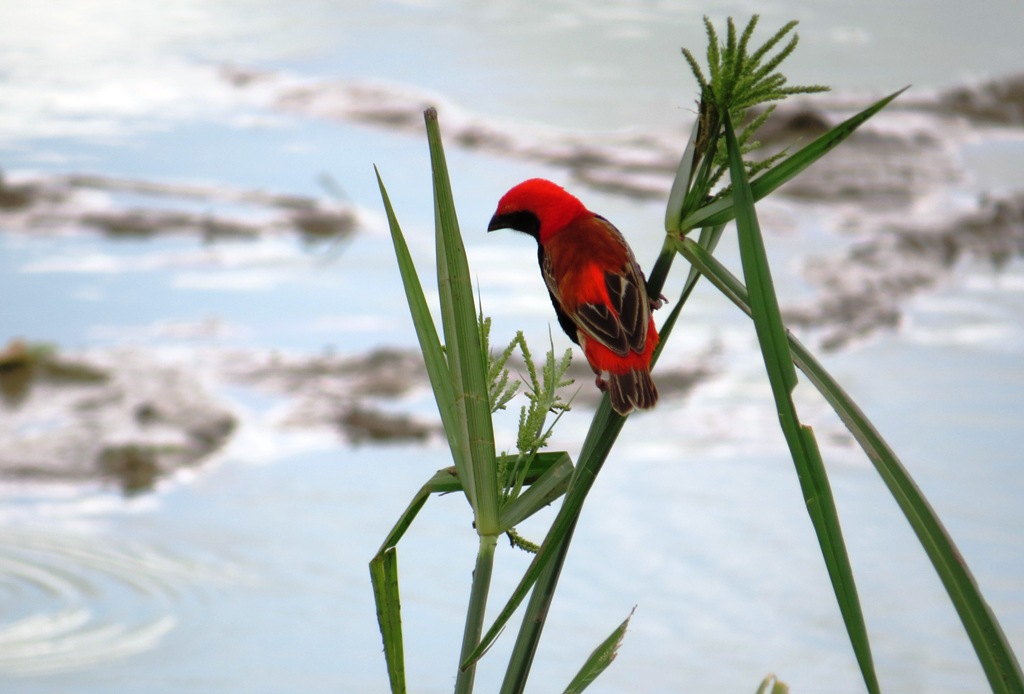
The Nyerere National Park is home to over 400 species of birds. We shall in the morning explore the area around Mtemere Gate. Bird species expected: Horus Swift, Brown-headed Parrot, Tanzania Red-billed Hornbill, Senegal Lapwing, African Hawk-Eagle, Bateleur, Southern Cordon bleu, Yellow-fronted Canary, Crimson-rumped Waxbill, Purple-banded Sunbird, Retz’s Helmetshrike, Green Woodhoopoe, Temminck’s Courser, Striped Kingfisher, Silvery-cheeked Hornbill, Brown Snake Eagle Later in the afternoon do a boat ride in Rufiji River, where we will be treated with flocks of White-fronted Bee-eaters on the bank of the river nesting in their hundreds. African Skimmers, Malagasy Pond Heron, Giant Kingfisher, Woolly-necked Stork, and a couple of African Fish Eagles can be heard calling melodiously from the top of the trees, their yodeling howl is described as the sound of Africa
This morning after breakfast we shall check out of the camp and drive to Dar- es Salaam for your flight back home
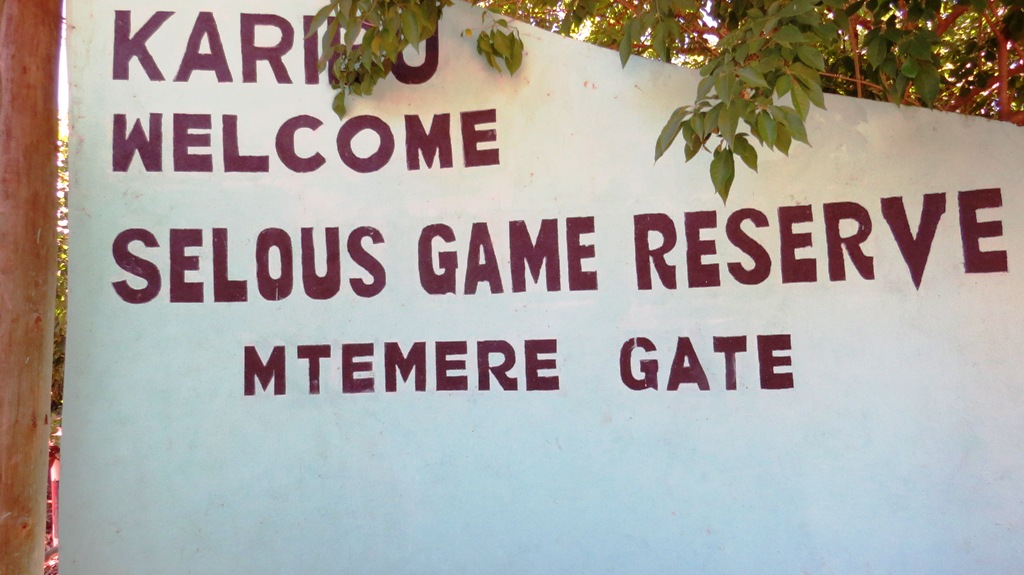
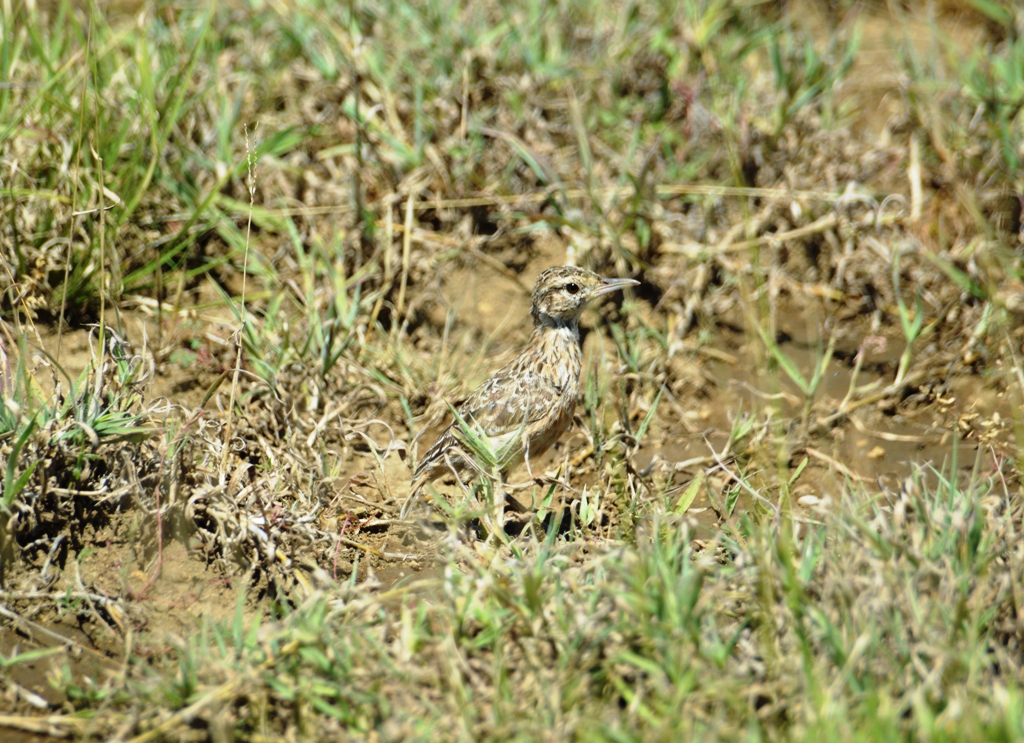
White-backed Heron, Malagasy Pond- Heron, Rufous-bellied Heron, Dimorphic Egret, African pygmy Goose, Ovambo Sparrowhawk, Bat Hawk, Dickinson’s Kestrel, Eleonora’s Falcon, Udzungwa forest Partridge, Red-winged Francolin, Blue Quail, Spotted Crake, Lesser Gallinule, Lesser Jacana,
Wattled Crane, Violet tipped Courser, Madagascar Pratincole, White-crowned Lapwing, Senegal Lapwing,
White-fronted Plover, Pacific Golden Plover, Red-necked Phalarope, Terek Sandpiper, Broad-billed Sandpiper, Ruddy Turnstone, Heuglin’s Gull, Sooty Gull, Saunders’s Tern, Sooty Tern, African Skimmer, Brown-headed Parrot, Brown-necked Parrot, Purple crested Turaco, Livingstone Turaco, Grey Go – away-bird, Thick-billed Cuckoo, Madagascar lesser Cuckoo, Barred Long-tailed Cuckoo, Yellowbill, Black Coucal, Pel’s Fishing Owl, Mottled Spinetail, Bohm’s Spinetail, Mangrove Kingfisher, Half collared Kingfisher, Bohm’s Bee-eater,
Swallow-tailed Bee-eater, Racket-tailed Roller, Ruaha Hornbill, Pale-billed Hornbill, Crested Barbet, Speckle- throated Woodpecker, Olive Woodpecker, African Pitta, Bush Pipit, White-breasted Cuckoo-shrike, White chested Alethe, Olive flanked Robin-Chat, Kurrichane Thrush, Orange Ground Thrush, Spot-throat, Dappled mountain- Robin, Miombo Rock Thrush, White-headed Black Chat, Familiar Chat, Green- capped Eremomela, African Tailorbird, White-tailed Cisticola, Kilombero Cisticola, Red-winged Warbler, Miombo Wren-Warbler, Brown-headed Apalis, Chapin’s Apalis, White-winged Apalis, Livingstone’s Flycatcher, White-winged Tit, Rufous-bellied Tit, Miombo Double-collared Sunbird, Rufous-winged Sunbird, Fulleborn’s black Boubou, Green-headed Oriole, Southern Blue-eared Starling, White-winged Starling, Yellow-throated Petronia, Southern Brown-throated Weaver, Kilombero Weaver, Zanzibar Red Bishop, Orange-winged Pytilia, Red-faced Crimsonwing, Lesser Seedcracker, Southern Cordon Bleu, Black-tailed Grey Waxbill, Cabanis’s Bunting …plus many more
A full-day birding in Ol Pejeta Conservancy offers a wealth of possibilities, the park hosts exciting bird species and special animals. Ol Pejeta exhibits such a versatile geography, endowed with endless rolling plains, rivers, marshes, and wetlands which are responsible for the great variety and abundance of birds and mammals
